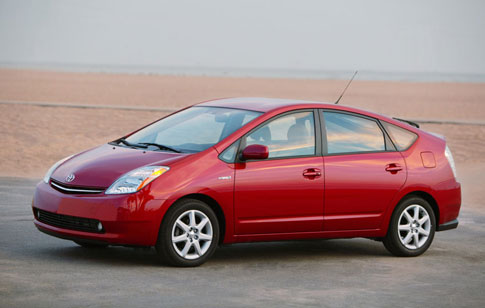
I’m always a bit peeved hearing people say the environmental movement is going to damage the economy and anything that weens ourselves off of oil is going to hurt our strongest American corporations. Logical argument, but a weak one. First of all, our oil companies are posting record profits while American citizens are amidst a real depression. The money that is going to oil corporations is what used to be spent on goods and services. This lack of consumption coupled with rising costs of goods due to high transportation costs slows the economy and causes recessions. Since there are no alternatives, demand is inelastic, meaning people will pay just about anything to be able to fill up their vehicles. Our fossil fuel addiction has given oil companies and the middle eastern cartels the ability to treat us like fiends.
But when big oil starts spreading the myth that they are somehow god’s gift to the American economy, it gets irritating. For example, John Hoffmeister, former president of Shell oil was on Glenn Beck the other day saying an economic disaster would ensue if we were to “get off oil”. Because, you know, oil is also used to make “artificial Christmas trees, plastic bottles, kitchen utensils.” He also warns, “Say goodbye to all kinds of things that people use and take for granted.” Hey, Hoffmeister, nobody asked you to stop supplying manufacturing companies with oil, we just meant that America deserves a choice to not pay $10 a gallon in the near future. So stop holding other American goods hostage that happen to involve oil and take that condescending smirk on your face.
But hope is on the horizon. If you have driven across the Midwest United States you probably passed a modern wind farm. Not only are they beautiful, magnificent structures, but one turbine alone is capable of powering 4000 homes. Wind turbines are being built and installed in America at a breakneck pace, and generating quite a buzz worldwide. Along with this technology, other clean, alternative electricity sources are developing and replacing our conventional, antiquated methods. The energy revolution will create plenty of jobs for Americans, provide cheap renewable energy, and enhance the grid to charge electric cars, which, actually wont require as much energy as you think.
Several alternative fuels have been developed, including ethanol, biodiesel, and hydrogen. However, all of these are simply new energy sources to be wasted in the inefficient combustion engines of our cars. Ethanol and hydrogen are endorsed by oil companies because they are fuels that they can sell, we can burn, and then create another vicious game of supply and demand that the consumer will inevitably lose. The potential of hydrogen seems to be all the rage now, but there are key issues that prevent it from every being a viable alternative. For instance, a hydrogen car is, on average right now, $1,000,000, so we have a way to go before the general population can afford them. They will not have nearly the range of a gasoline car, and if you think gas is expensive now, wait til you see how much hydrogen will be, if there is ever a hydrogen infrastructure. Biofuel and ethanol all need an established infrastructure as well.

Electric cars, on the other hand, can be charged like your cell phone, and can free us from being slaves to the oil industry. This will inevitably help the middle class, which is spending all its spare cash at the pump. This is money that could go towards goods and services, savings, retirement funds, and our children’s educations. The electric car will also bring several variations of jobs to America. Since big auto has not yet gotten in on the action, startups are popping up across the nation with an entrepreneurial spirit similar to the great American oil rush that got us in this situation. Lithium-Ion battery companies like Enerdel are providing more manufacturing jobs to America. EnerDel is expanding its Indianapolis plant to provide batteries to Th!nk, which is planning to produce 10,000 electric cars in 2009. Tesla Motors now plans to assemble its 2010 Model S (formerly the Tesla Whitestar), in Northern California (because Ahnold said so), creating hundreds of well paying jobs. Several more startups based in the states will either build their own electric cars or retrofit existing vehicles in hopes of attaining a spot in the rapidly crowding, clean transportation movement.
What is important to know is that people and businesses always adapt. Technological innovation will always be beneficial to mankind, and with our entrepreneurial spirit, new powerful companies will rise. Unfortunately, established corporations become obsolete if they do not react and adapt to change. Big oil’s reaction is suppression, petition, promises of clean alternatives 15 years from now every 15 years, and now they’re going on talk shows telling us we cannot survive without them. They need a better strategy, or else we will run out of oil, and then we won’t have artificial Christmas trees.










